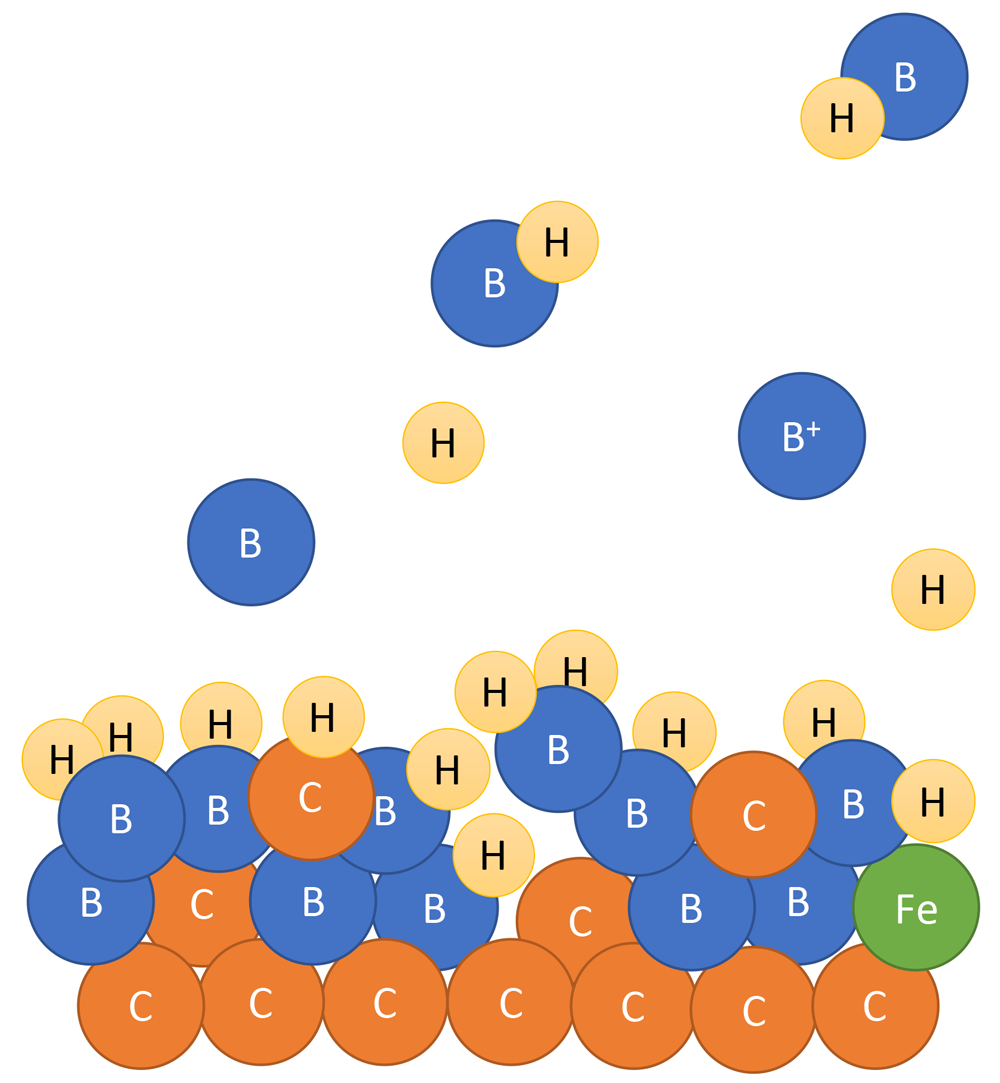Observation of boron deposition processes via molecular spectroscopy
During a boron powder injection experiment in the Large Helical Device (LHD), we observed for the first time where and how boron is deposited on plasma-facing walls. This achievement advances our understanding of how to control the amount of impurity in the plasma and the amount of neutral hydrogen in the peripheral region, which affects the efficiency of fusion power generation.

To generate high-performance plasmas, it is necessary to suppress the release of neutral hydrogen from the wall and of the inflow of impurities into the plasma. Recently, a method to inject boron powder into the plasma was developed by Princeton Plasma Physics Laboratory, and has been introduced and tested in fusion devices with tokamak and helical configurations around the world. However, there has been no experimental verification of how boron is transported and deposited in the vacuum vessel during plasma discharge. In this study, we quantitatively evaluated the amount of boron around the wall during a plasma discharge by measuring molecular emission lines.
The LHD research group, in collaboration with researchers at the Princeton Plasma Physics Laboratory worked to measure the boron hydride molecule. The temperature of the main plasma was tens of millions of degrees, whereas the boron hydride molecule dissociated to hydrogen and boron at tens of thousands of degrees. Boron hydride is unstable and cannot form stably in the gas phase, so it is formed by desorption from the wall and quickly dissociates. In a plasma discharge experiment in the Large Helical Device, the research team dropped boron powder into the plasma from an upper port of the vacuum vessel, and measured the spatial distribution of the emission line spectra of boron hydride around the plasma-facing wall to determine where and how the boron was deposited in the vacuum vessel.
The measurement results show that the boron hydride was localized around the divertor plate, which was in contact with the plasma in the vacuum vessel, and that the amount of boron hydride around the wall increased in proportion to the amount of the injected boron powder. These results indicate that the injected boron powder was ionized and transported in the plasma and deposited around the divertor plate. Based on the intensity of the emission lines, at least 10% of the injected boron powder was deposited around the divertor. On the other hand, the amount of hydrogen released as boron hydride was about 0.01% of the particle incident on the divertor plate, indicating that the boron hydride did not contribute to the hydrogen release and was a good indicator of the amount of boron deposited.
From other emission line spectra, it was confirmed that the amounts of neutral hydrogen and carbon impurities were significantly reduced during the boron powder injection, thus the deposited boron around the divertor was effective for suppression of neutral hydrogen and impurities in the plasma. These results provide important information on the formation process and measurement of a boron layer on the wall in the fusion device by boron powder injection, and the suppression of neutral hydrogen and an impurity influx toward high performance fusion plasmas.
This research result was published on November 3, 2022 in Nuclear Fusion, a journal on controlled thermonuclear fusion by the International Atomic Energy Agency.
